Posted on August 30th, 2010 by Jaimie Schock
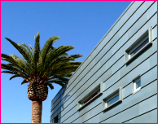 The country’s most expensive public school ever, the Robert F. Kennedy Community Schools, opens its doors next month in Los Angeles. Built on the remains of the old Ambassador Hotel, where RFK was assassinated in 1968, it will accommodate 4,200 K-12 students. The pricetag? An eye-popping $578 million.
The country’s most expensive public school ever, the Robert F. Kennedy Community Schools, opens its doors next month in Los Angeles. Built on the remains of the old Ambassador Hotel, where RFK was assassinated in 1968, it will accommodate 4,200 K-12 students. The pricetag? An eye-popping $578 million.
Read More
Filed under: K-12 Education News | Comments Off on Pricey Public School Raises Objections
Tags: education firsts, Education Policy
Posted on August 30th, 2010 by Jaimie Schock
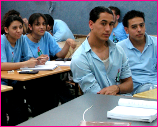 Young students are fascinated by science and very open to learning. But as they age, that interest and curiosity tends to wane — a fact too often reflected in test scores. In Texas, only 67 percent of students pass the science portion of the Texas Assessment of Knowledge and Skills exam, while 90 percent pass the English component.
Young students are fascinated by science and very open to learning. But as they age, that interest and curiosity tends to wane — a fact too often reflected in test scores. In Texas, only 67 percent of students pass the science portion of the Texas Assessment of Knowledge and Skills exam, while 90 percent pass the English component.
Read More
Filed under: K-12 Education News | Comments Off on Kids Love Science, Teens Less So
Tags: Research, Research on Learning, Science Education, Science Teachers, Teacher Training
Posted on August 30th, 2010 by ASEE
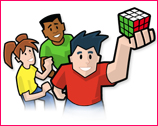 Who can resist fiddling with the Rubik’s Cube, that enduring, colorful puzzle? In this lesson, as students in grades 9-12 learn to solve the cube, mixing up, then re-aligning each of its sides, they become acquainted concepts of solid geometry and practice skills of sequencing, memorization, and problem solving.
Who can resist fiddling with the Rubik’s Cube, that enduring, colorful puzzle? In this lesson, as students in grades 9-12 learn to solve the cube, mixing up, then re-aligning each of its sides, they become acquainted concepts of solid geometry and practice skills of sequencing, memorization, and problem solving.
Holding the Rubik’s Cube, twisting and turning the parts, can help students of all ages grasp important math concepts including area, perimeter, volume, angles, algorithms and enumeration, among other geometry and algebraic topics. This sample lesson, drawn from youcandothecube.com, is one of several on the site that uses the cube to illustrate concepts of general mathematics, algebra, and geometry.
Read More
Filed under: Grades 9-12, Lesson Plans | 1 Comment »
Tags: Geometry, Grades 9-12, Mathematics
Posted on August 30th, 2010 by Jaimie Schock
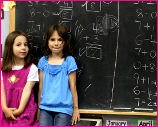 Formative assessments can be a great teaching tool to help math instructors ensure their pupils are grasping the lessons. If problems are spotted, adjustments can be made before it’s too late. But, is there a better way to conduct them? Researchers aim to find out.
Formative assessments can be a great teaching tool to help math instructors ensure their pupils are grasping the lessons. If problems are spotted, adjustments can be made before it’s too late. But, is there a better way to conduct them? Researchers aim to find out.
Read More
Filed under: K-12 Education News | 1 Comment »
Tags: Math, Math teachers, Mathematics, National Science Foundation, Research, Research on Learning
Posted on August 24th, 2010 by Jaimie Schock
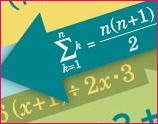 The Illuminations website from the National Council of Teachers of Mathematics features a library of 104 online activities that help to make math come alive in the classroom or at home. It also has 560 lessons for preK-12 math educators, information on mathematics teaching standards, and hundreds of links to outside web resources.
The Illuminations website from the National Council of Teachers of Mathematics features a library of 104 online activities that help to make math come alive in the classroom or at home. It also has 560 lessons for preK-12 math educators, information on mathematics teaching standards, and hundreds of links to outside web resources.
Read More
Filed under: Web Resources | Comments Off on Curriculum: Illuminations Math Teacher Resources
Tags: Class Activities, Curriculum, Internet Resources, Lesson Plans, Math, Math teachers, Mathematics, Web Resources
Posted on August 16th, 2010 by ASEE
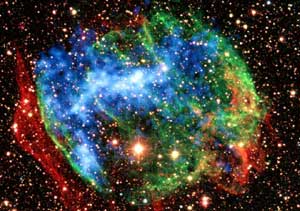
In this lesson, students educate themselves about the Hubble and the planned Webb telescopes, using Internet resources. After discussing the impact as well as the cost of large space telescopes, the class divides into two to debate whether or not funding on planetary research should continue.
Read More
Filed under: Grades 6-8, Lesson Plans | 1 Comment »
Posted on August 16th, 2010 by Jaimie Schock
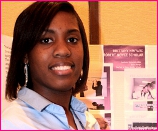 Last year, Brittany Hinyard’s eighth graders became astronomers. Students built models of the solar system, used software to make planets gravitate toward or apart from each other, and sought out information on satellites. Teaching this way, emphasizing inquiry, multiple science disciplines, and team learning, requires an extra commitment. But for Hinyard, there have been rewards in prestige and professional satisfaction.
Last year, Brittany Hinyard’s eighth graders became astronomers. Students built models of the solar system, used software to make planets gravitate toward or apart from each other, and sought out information on satellites. Teaching this way, emphasizing inquiry, multiple science disciplines, and team learning, requires an extra commitment. But for Hinyard, there have been rewards in prestige and professional satisfaction.
Read More
Filed under: Special Features | 1 Comment »
Tags: Astronomy, Science Teachers, Teachers
Posted on August 16th, 2010 by ASEE
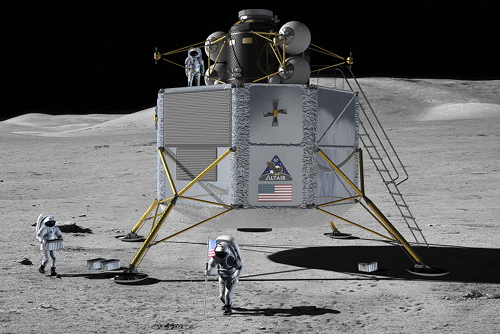
In this lesson, students assume the role of NASA aerospace engineers, following the engineering design process to learn the steps for designing, creating, and improving equipment. They design and build a shock-absorbing system that will protect two “astronauts” when they land, and come to understand some of the challenges of lunar landings.
Read More
Filed under: Grades 6-8, Grades K-5, Lesson Plans | 3 Comments »
Tags: Aerospace, Aerospace Engineering, Engineering Design Process, Grades 3-8, NASA
Posted on August 16th, 2010 by ASEE
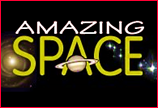 Amazing Space is a Website operated by the Space Telescope Science Institute’s Office of Public Outreach, aimed at promoting “the science and majestic beauty of the universe” for use in the classroom by educators and students of all ages. Check out the site’s news stories, online games and activities, “Astronomy Basics,” and a comprehensive set of teaching tools for educators offering information and materials.
Amazing Space is a Website operated by the Space Telescope Science Institute’s Office of Public Outreach, aimed at promoting “the science and majestic beauty of the universe” for use in the classroom by educators and students of all ages. Check out the site’s news stories, online games and activities, “Astronomy Basics,” and a comprehensive set of teaching tools for educators offering information and materials.
Read More
Filed under: Web Resources | Comments Off on Website: Amazing Space
Tags: Astronomy, Hubble Space Telescope, Telescope, Website
 The country’s most expensive public school ever, the Robert F. Kennedy Community Schools, opens its doors next month in Los Angeles. Built on the remains of the old Ambassador Hotel, where RFK was assassinated in 1968, it will accommodate 4,200 K-12 students. The pricetag? An eye-popping $578 million.
The country’s most expensive public school ever, the Robert F. Kennedy Community Schools, opens its doors next month in Los Angeles. Built on the remains of the old Ambassador Hotel, where RFK was assassinated in 1968, it will accommodate 4,200 K-12 students. The pricetag? An eye-popping $578 million.








 Young students are fascinated by science and very open to learning. But as they age, that interest and curiosity tends to wane — a fact too often reflected in test scores. In Texas, only 67 percent of students pass the science portion of the Texas Assessment of Knowledge and Skills exam, while 90 percent pass the English component.
Young students are fascinated by science and very open to learning. But as they age, that interest and curiosity tends to wane — a fact too often reflected in test scores. In Texas, only 67 percent of students pass the science portion of the Texas Assessment of Knowledge and Skills exam, while 90 percent pass the English component.
 Formative assessments can be a great teaching tool to help math instructors ensure their pupils are grasping the lessons. If problems are spotted, adjustments can be made before it’s too late. But, is there a better way to conduct them? Researchers aim to find out.
Formative assessments can be a great teaching tool to help math instructors ensure their pupils are grasping the lessons. If problems are spotted, adjustments can be made before it’s too late. But, is there a better way to conduct them? Researchers aim to find out. The Illuminations website from the National Council of Teachers of Mathematics features a library of 104 online activities that help to make math come alive in the classroom or at home. It also has 560 lessons for preK-12 math educators, information on mathematics teaching standards, and hundreds of links to outside web resources.
The Illuminations website from the National Council of Teachers of Mathematics features a library of 104 online activities that help to make math come alive in the classroom or at home. It also has 560 lessons for preK-12 math educators, information on mathematics teaching standards, and hundreds of links to outside web resources.

 Amazing Space is a Website operated by the Space Telescope Science Institute’s Office of Public Outreach, aimed at promoting “the science and majestic beauty of the universe” for use in the classroom by educators and students of all ages. Check out the site’s news stories, online games and activities, “Astronomy Basics,” and a comprehensive set of teaching tools for educators offering information and materials.
Amazing Space is a Website operated by the Space Telescope Science Institute’s Office of Public Outreach, aimed at promoting “the science and majestic beauty of the universe” for use in the classroom by educators and students of all ages. Check out the site’s news stories, online games and activities, “Astronomy Basics,” and a comprehensive set of teaching tools for educators offering information and materials.